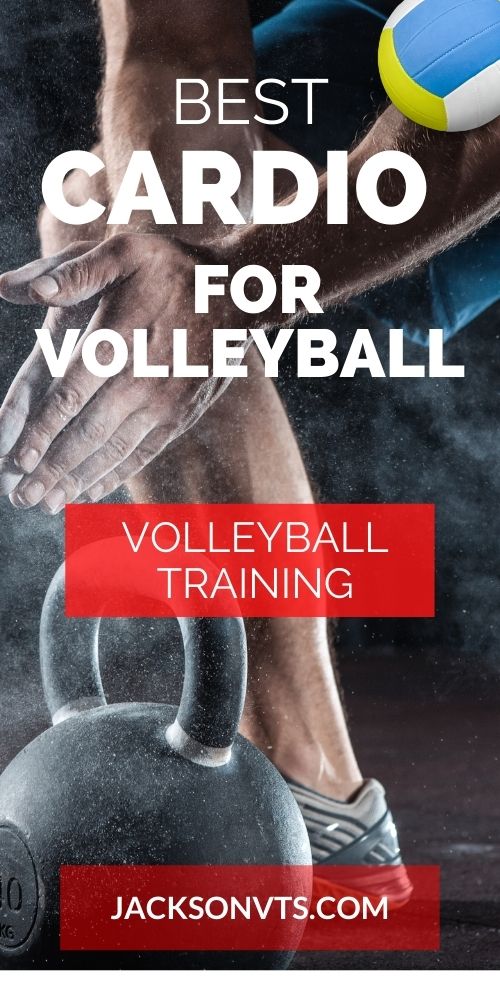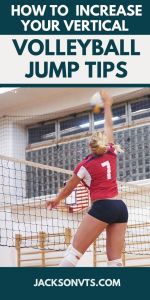Is Volleyball Cardio Right for VB Conditioning?
Should improving volleyball cardio be the focus of your volleyball conditioning?
What most are referring to as cardio is when the athlete feels fatigued and doesn't have the energy to play hard.
Volleyball Cardio Conditioning Jump Training
They may have trouble focusing on the game and may seem to have "lost a step".
"Cardio" really isn't the best term to use for conditioning.
I like to refer to conditioning as either aerobic or anaerobic. Anaerobic conditioning is training for explosive movements such as jumping, fast footwork, and sprints. Aerobic conditioning (often what the focus is when training "cardio") is running long distances, swimming, and cycling. These are efforts or activity that last for long periods of time without rest.
Anaerobic athletes go hard and fast with rest between hard bouts of effort. This is how volleyball is played at a high level.
Volleyball Cardio Conditioning the Core
What Cardio Equipment is Good for Volleyball Training?
Equipment for volleyball cardio workouts such as treadmills, stair climbers, stationary bikes, and elliptical machines can be helpful for conditioning for volleyball.
Yes, some home fitness equipment is more appropriate for volleyball training than other fitness equipment.
Its important to understand what kind of conditioning you need to get in the best volleyball shape.
Vertimax Training for Volleyball
Cardio Workouts for Your Volleyball Fitness Training
The best conditioning for volleyball depends on the level of athlete. For example, if you are untrained, you will benefit more from using cardio equipment than a more advanced athlete. But that doesn't necessarily mean cardio is best if you are untrained.
All sports are different. Volleyball can be categorized as a strength and power sport.
Athletes that play other sports such as basketball and football need more endurance than a volleyball player while also needing a high level of strength and power because to be successful in those sports, athletic movement must be quick and explosive.
For example, in volleyball, the player that is the strongest and quickest is going to approach the fastest and jump the highest. The quicker and more agile volleyball player is going to get in position better to make plays.
Traditional volleyball cardio workouts - running for 30 minutes on a treadmill or using a stair climber for 30 minutes - is more appropriate for sports like basketball, soccer and ice hockey because these sports require the athlete to possess a much higher level of endurance than a volleyball player does because play is much more continuous in those sports without breaks for rest. In volleyball, you have many short breaks without constant activity.
Player shagging the ball, player substitutions, and timeouts all take time. This time may only be 5 to 10 seconds, but if you are conditioned right, you will recover during these breaks and be ready to perform your best to make quick explosive movements during play.
If you enjoyed these tips and would like to keep it close to you at any time, just save this pin to your Pinterest Volleyball Training Board.
Benefits of Cardio Workouts
Every volleyball player needs aerobic fitness (traditional cardio workouts) to some degree. For example, if you dont have an active lifestyle or dont exercise at all, it will be difficult for you to perform well on the volleyball court. If you were to show up at volleyball tryouts without being conditioned in any way, it will likely be a struggle to just make it through the tryout.
Play in volleyball isnt continuous, but matches or tournaments can last long enough that if you dont have a basic level of aerobic endurance your volleyball performance can be affected significantly.
Any untrained athlete can benefit from cardio workouts. For example, if an untrained athlete jogs on a treadmill for 5 to 10 minutes a day, they are going to feel the benefits on the volleyball court.
They will have enhanced their endurance which means they can play a longer time without feeling the effects of fatigue, but training aerobically isn't necessarily the solution to getting in shape for volleyball.
Volleyball Dynamic Warm UP
Why Cardio Workouts are Not the BestMethod of Training for Volleyball
Even though when you play volleyball you may feel you benefited a great deal from your time spent on the treadmill or stair climber machines, aerobic training isnt the best method of training for volleyball conditioning.
An untrained athlete, especially a young athlete, will benefit from just about any kind of conditioning. This doesnt mean you shouldnt do a structured workout or train without purpose.
An untrained athlete will benefit from just about any kind of conditioning (aerobic, anaerobic, etc) because thus far they have developed a minimal exercise adaptation. With young athletes, not only is training age important but also the young athletes maturity level.
Volleyball is a strength and power sport. Play in volleyball isnt continuous. To be in good volleyball shape, the athlete must condition specific to volleyball.
Since there are bouts of rest in volleyball (on average, 6 seconds between plays) then a volleyball player should condition with rest between bouts of exercise.
Interval Training, Anaerobic Exercise for Volleyball
Interval training is a form of anaerobic training. In interval training, the athlete performs the exercise for a period of time with rest (intervals) between sets.
For example, a sprinter might training by performing 30 second sprints with one minute rest intervals between sets.
Lifting Weights is actually really good for Volleyball Cardio
Or a volleyball player might perform 3 sets of 6 squats with two minutes between sets.
The difference between aerobic exercise and anaerobic exercise is
- During aerobic exercise, the athlete recovers during the exercise.
- During anaerobic exercise, the athlete recovers between exercise bouts.
- Aerobic exercise stresses the oxidative energy system.
- Anaerobic exercise stresses the phosphagen and glycolytic energy systems.
Since volleyball is a strength and power sport with periods of rest between plays, more emphasis should be put on training the phosphogen and glycolytic energy systemsand less on the oxidative energy system.
Energy system development and strength training adaptations are largely dependent on 3 things
- Intensity
Intensity is how hard you exercise. When conditioning aerobically such as running long distance, exercise intensity is low. - Duration
Duration is how long the exercise lasts. In volleyball, plays last on average from 5 to 15 seconds. When playing volleyball, its crucial to be able to move quickly and explosively to make plays. For example, the quicker and more explosive volleyball player is the one that will get in good position faster and approach to hit faster and therefore jump higher. - Recovery
Recovery is the time of rest between exercise bouts or the amount of time between plays in volleyball.
When playing volleyball, you are using the phosphagen energy system to make a quick explosive approach to hit, block jump, quick side lateral movement to pass, or quick lunges to the ball.
You are using the glycolytic energy system when needing the stamina to make quick explosive plays during long rallys.
You are using the oxidative energy system to some degree for stamina to make it through a long match or tournament and still be able to play at a high level.
Since it is to your advantage to be quick and explosively jump high, it is wise to train to be strong and explosive. Since play in volleyball isnt continuous and you have short periods of rest between plays, it is a good idea to condition using interval training.
Band Training for Volleyball
How to Benefit from Cardio Workouts
Even though interval training is likely much better for you than traditional volleyball cardio, there are benefits to using cardio equipment such as treadmills, exercise bikes, and elliptical machines.





